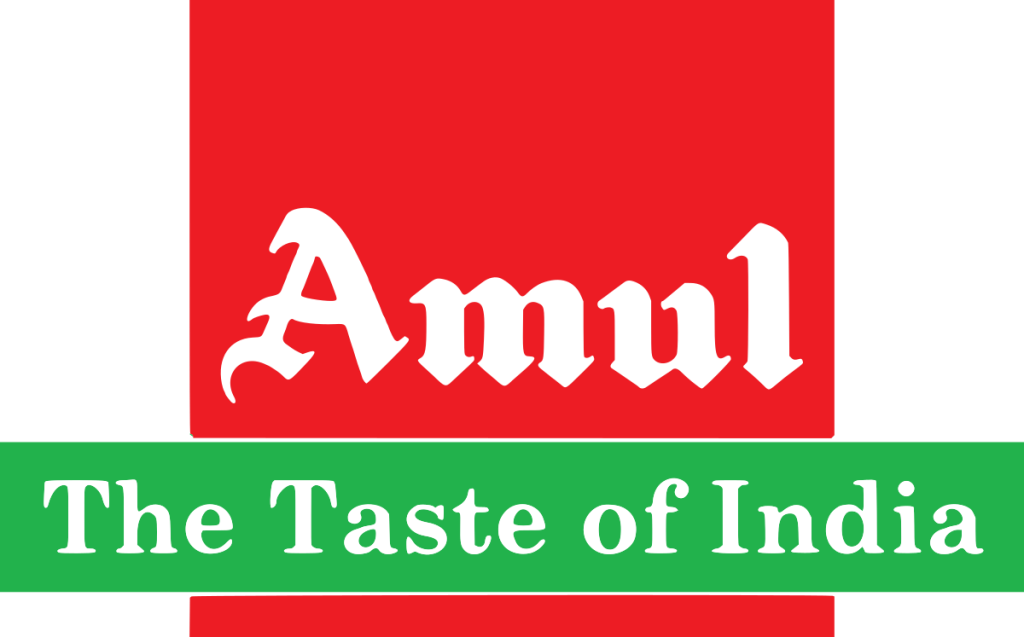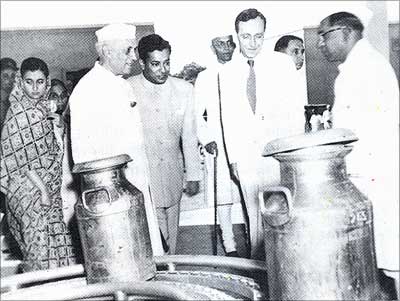Anand, Gujarat, India’s AMUL, or Anand Milk Union Limited, is a dairy cooperative. It is one of the biggest dairy cooperatives in the world and the biggest producer of milk in India. Tribhuvandas Patel and Verghese Kurien formed AMUL in 1946. To assist Gujarati dairy farmers in obtaining a fair price for their milk, the cooperative was established.
AMUL has been successful in paying its farmers a fair price for their milk and making dairy products accessible to consumers. The cooperative has also played a significant role in the growth of India’s dairy industry. AMUL serves as a template for dairy cooperatives all over the world.
Introduction to Amul

Dairy cooperative Amul is located in Anand, Gujarat, India. It is one of the biggest dairy cooperatives in the world and the primary supplier of milk in India. Tribhuvandas Patel and Verghese Kurien created Amul in 1946. To assist Gujarati dairy farmers in receiving a fair price for their milk, the cooperative was established.
A collective of more than 3.6 million milk producers makes up Amul. Each day, it generates more than 22 million liters of milk. It produces more than 52,000 crores ($6.5 billion) in revenue annually.
It has won the Ramon Magsaysay Award, the World Food Prize, and the Hamdan bin Mohammed bin Rashid Al Maktoum International Award for Food Security from the UN Food and Agriculture Organization (FAO).
History of Amul
Here are some of the key events in the history of Amul:
- 1946: Amul is founded in Anand, Gujarat.
- 1955: Amul introduces the Anand Pattern, a model for dairy cooperatives that is now used around the world.
- 1970: Amul becomes the largest milk producer in India.
- 1975: Amul launches its first advertising campaign, “Utterly Butterly Delicious.”
- 1984: Amul exports its products to the United States.
- 2001: Amul wins the Ramon Magsaysay Award, Asia’s highest civilian award.
- 2010: Amul becomes a billion-dollar company.

Mission and goals of Amul
- To provide a fair price for milk to its farmers.
- To make dairy products affordable for consumers.
- To improve the quality of milk production in India.
- To promote dairy farming as a viable livelihood option for rural farmers.
- To create employment opportunities in rural areas.
- To contribute to the economic development of India.
- To set an example for other dairy cooperatives around the world.
Products and services of Amul

- Milk: Amul is the largest milk producer in India, and it produces a variety of milk products, including fresh milk, pasteurized milk, toned milk, skimmed milk, and condensed milk.
- Ghee: Amul ghee is a popular Indian clarified butter that is made from milk. It is a good source of fat and calories, and it is used in a variety of Indian dishes.
- Butter: Amul butter is a popular Indian butter that is made from milk. It is a good source of fat and calories, and it is used in a variety of Indian dishes.
- Cheese: Amul produces a variety of cheese, including cheddar cheese, mozzarella cheese, and paneer cheese. Cheese is a good source of protein and calcium, and it is used in a variety of Indian and international dishes.
- Yogurt: Amul yogurt is a popular Indian yogurt that is made from milk. It is a good source of protein and calcium, and it is used in a variety of Indian dishes.
- Ice cream: Amul ice cream is a popular Indian ice cream that is made from milk. It is a good source of protein and calcium, and it is enjoyed by people of all ages.
- Other products: Amul also produces a variety of other dairy products, including cream, milk powder, and condensed milk.
Amul's marketing strategies
| Strategy | Description |
|---|---|
| Product differentiation | Amul differentiates its products from its competitors by focusing on quality and freshness. Its products are known for being high-quality and fresh, and this is a key factor in its success. |
| Branding | Amul has a strong brand image that is associated with quality and trust. The company’s logo is a cow, which is a symbol of prosperity and abundance in India. |
| Pricing | Amul prices its products competitively. It offers a variety of products at different price points, so that consumers can find products that fit their budget. |
| Distribution | Amul has a strong distribution network that reaches all parts of India. This allows consumers to easily find Amul products wherever they are. |
| Promotion | Amul has a strong marketing campaign that promotes its products to consumers. The company uses a variety of channels, including television, print, and social media. |
| Sponsorship | Amul sponsors a variety of events and initiatives, such as sports tournaments and cultural festivals. This helps to raise awareness of the company’s brand and products. |
| Public relations | Amul maintains a good relationship with the media. The company regularly releases press releases and organizes events to keep its brand in the news. |
Conclusion
Leading dairy cooperative in India is Amul. It has an enthusiastic base of customers and a solid brand image. The organization has had great success with its marketing initiatives.
Some of the primary variables behind Amul’s marketing success include the following:
- The company focuses on quality and freshness.
- It has a strong brand image that is associated with quality and trust.
- It prices its products competitively.
- It has a strong distribution network.
- It has a strong marketing campaign that promotes its products to consumers.
- It sponsors a variety of events and initiatives.
- It maintains a good relationship with the media.
FAQs
- It has helped to improve the lives of millions of dairy farmers in India.
- It has made dairy products affordable for consumers.
- It has helped to boost the Indian economy.
- It has set an example for other dairy cooperatives around the world.
Related posts:
- AMC Full Form: Benefits, Components, Needs, Advantage
- ORS Full Form: Dehydration, Myths, Flavors, Varieties & Facts
- PCC Full Form: Importance, Types, Application Process
- PAN Full Form: Legal Provisions, Regulations,
- BRB Full Form: Productive, Routine, Distractions
- MCD Full From: Introduction, Responsibility, Challenges
- CT Scan Full Form: Scans, price, Advantages
- USA Full Form: History, Economics,Technology, culture
Most Popular Links
Career Tests

Graduates & Post Graduates

21st Century Skills & Learning Test Grade 12

21st Century Skills & Learning Test Grade 11

21st Century Skills & Learning Test Grade 10

PSYCHOMETRIC IDEAL CAREER TEST™

PSYCHOMETRIC SKILL BASED TEST FOR 9TH

PSYCHOMETRIC ENGINEERING SELECTOR

PSYCHOMETRIC EDUCATOR PROFESSIONAL SKILLS

PSYCHOMETRIC STREAM SELECTOR™

PSYCHOMETRIC COMMERCE CAREER SELECTOR

PSYCHOMETRIC HUMANITIES CAREER SELECTOR









